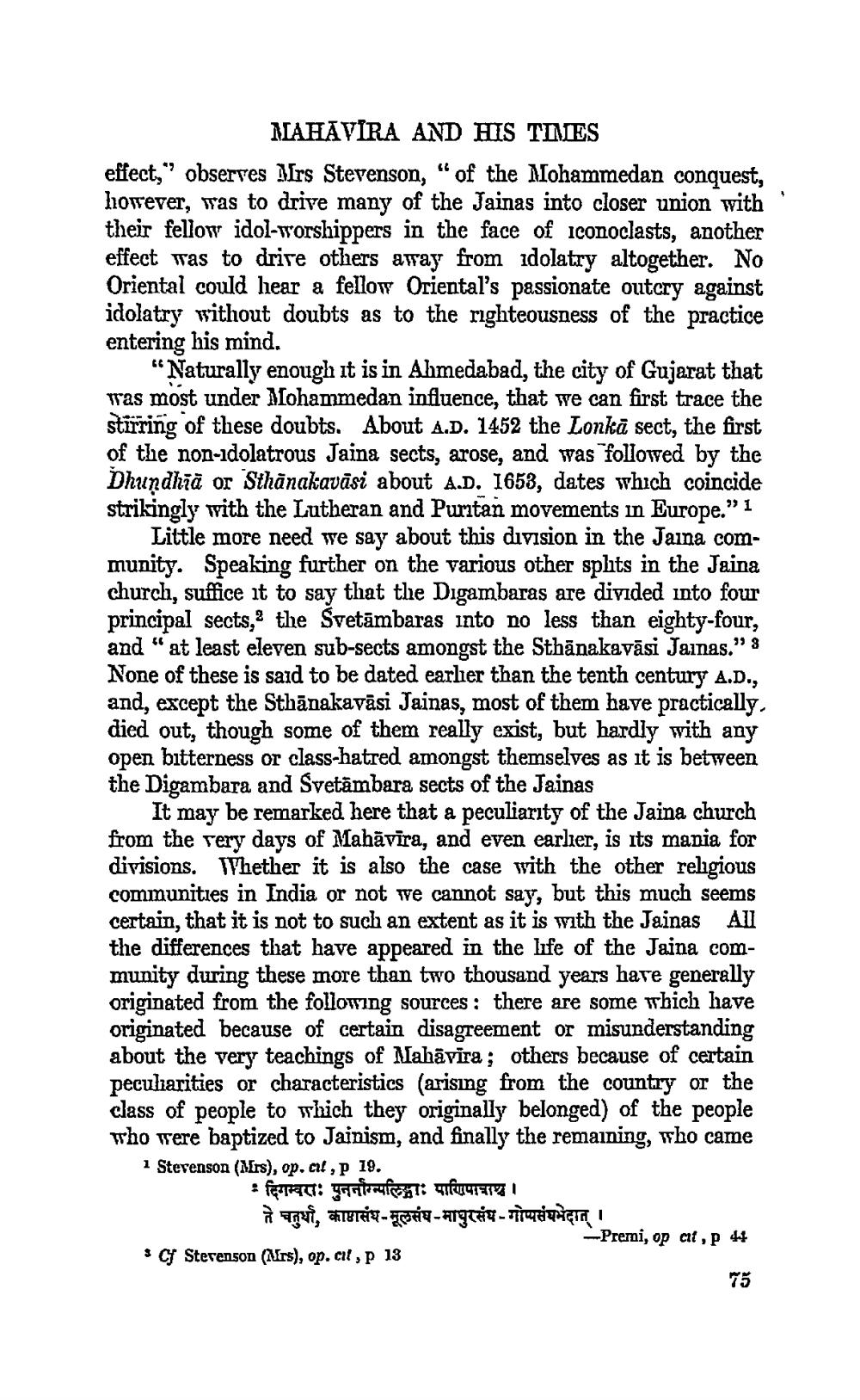________________ MAHAVIRA AND HIS TIMES effect," observes Mrs Stevenson, "of the Mohammedan conquest, however, was to drive many of the Jainas into closer union with their fellow idol-worshippers in the face of iconoclasts, another effect was to drive others away from idolatry altogether. No Oriental could hear a fellow Oriental's passionate outcry against idolatry without doubts as to the righteousness of the practice entering his mind. "Naturally enough it is in Ahmedabad, the city of Gujarat that was most under Mohammedan influence, that we can first trace the stirring of these doubts. About A.D. 1452 the Lonka sect, the first of the non-idolatrous Jaina sects, arose, and was followed by the Dhurdhja or Sthanakavasi about A.D. 1658, dates which coincide strikingly with the Lutheran and Pumtan movements in Europe." 1 Little more need we say about this division in the Jaina community. Speaking further on the various other splits in the Jaina church, suffice it to say that the Digambaras are divided into four principal sects, the Svetambaras into no less than eighty-four, and "at least eleven sub-sects amongst the Sthanakavasi Jainas." 3 None of these is said to be dated earlier than the tenth century A.D., and, except the Sthanakavasi Jainas, most of them have practically. died out, though some of them really exist, but hardly with any open bitterness or class-hatred amongst themselves as it is between the Digambara and Svetambara sects of the Jainas It may be remarked here that a peculiarity of the Jaina church from the very days of Mahavira, and even earlier, is its mapia for divisions, Thether it is also the case with the other religious communities in India or not we cannot say, but this much seems certain that it is not to such an extent as it is with the Jainas All the differences that have appeared in the life of the Jaina community during these more than two thousand years have generally originated from the following sources: there are some which have originated because of certain disagreement or misunderstanding about the very teachings of Mahavira; others because of certain peculiarities or characteristics arising from the country or the class of people to which they originally belonged) of the people who were baptized to Jainism, and finally the remaining, who came 1 Sterenson (Mrs), op.at, p 19. दिगम्बराः पुनर्नारम्पलिङ्काः पाणिपाचाश। i pui, art-ph-argrag- TTHAGIA -Premi, op cit, p 4 * C Sterenson (rs), op.at, p 13




